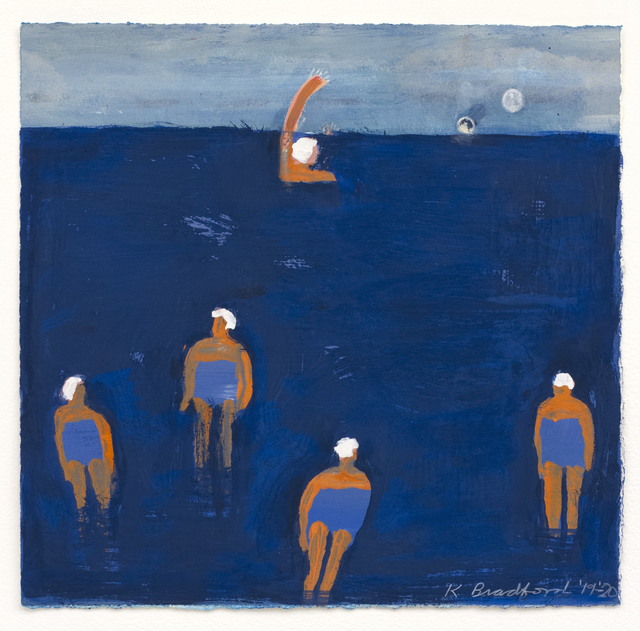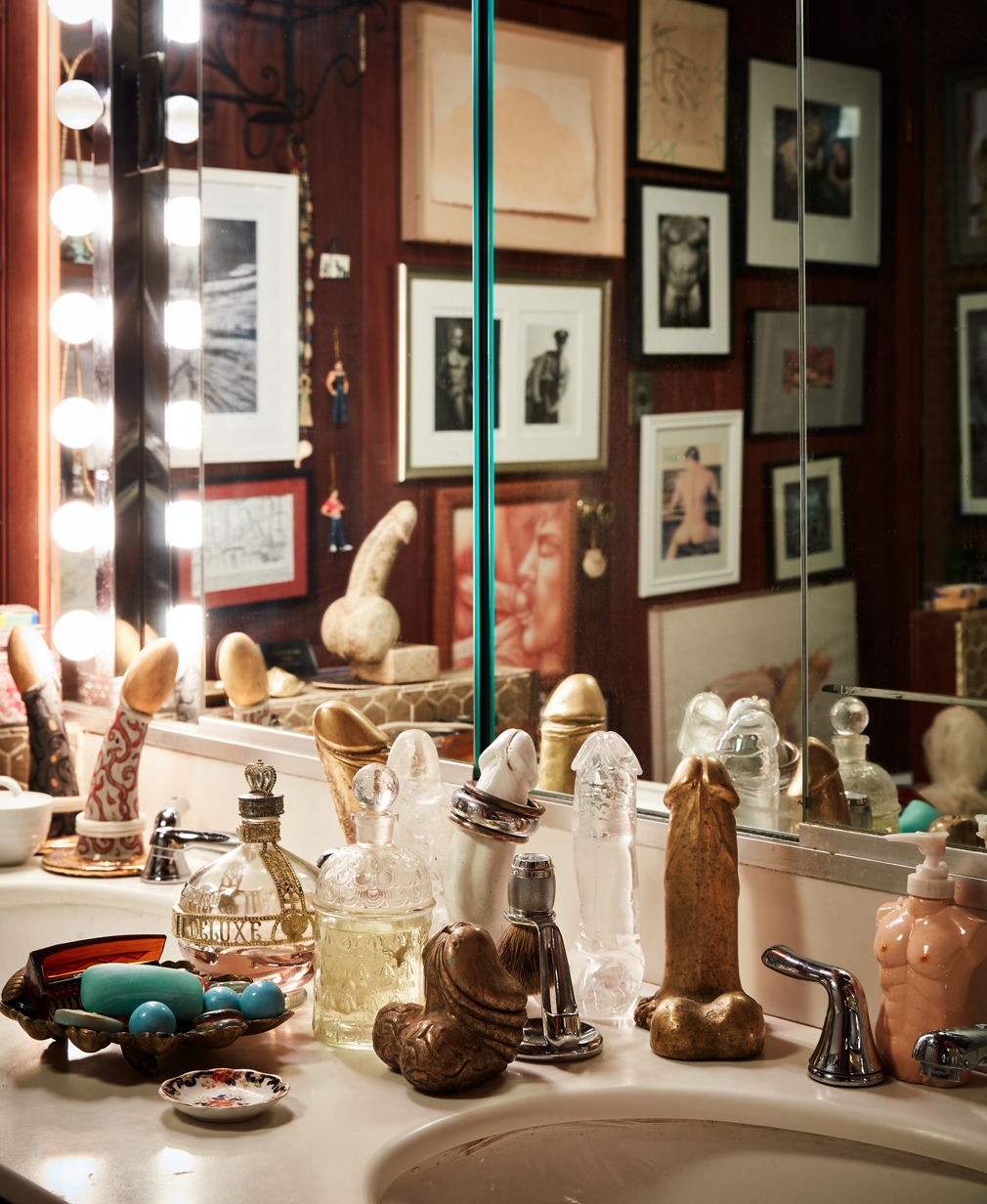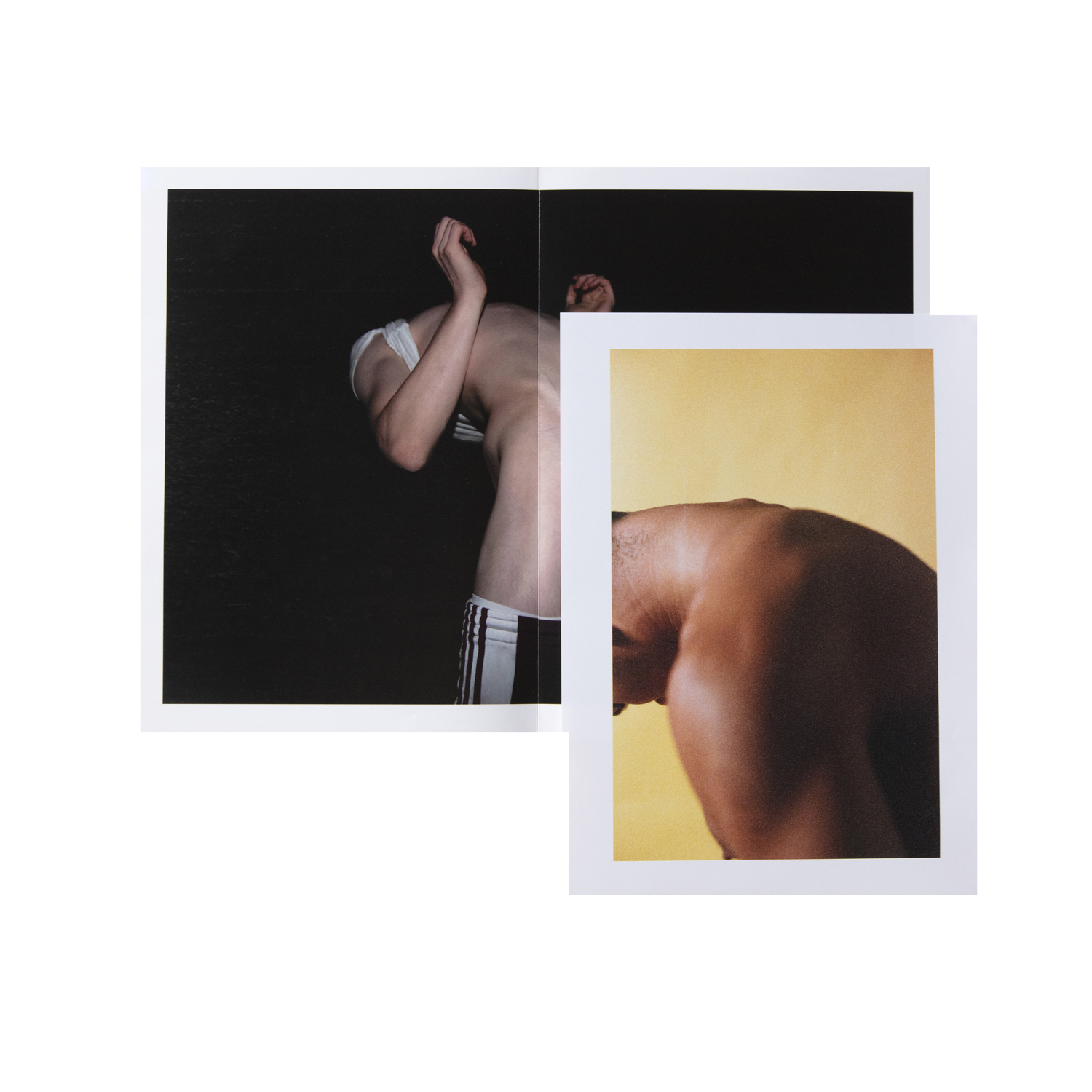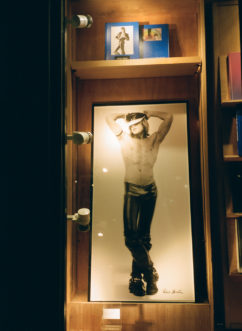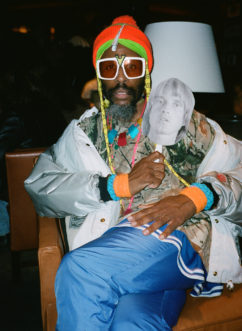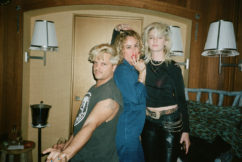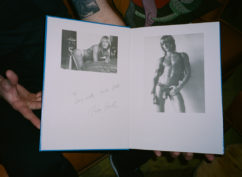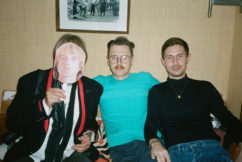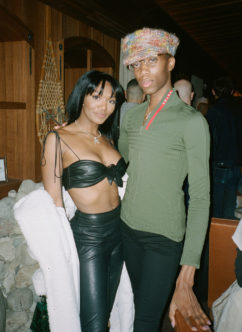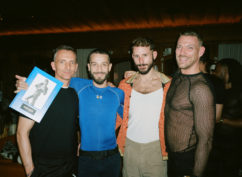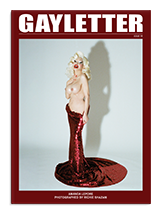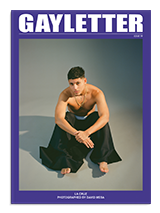Tuesday 04.28.20
Charles Leslie
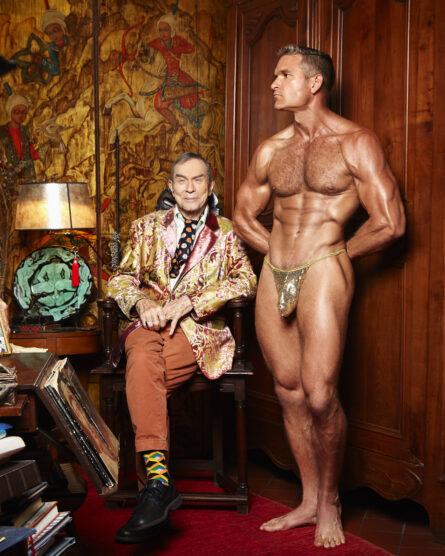
Charles Leslie is the renowned co-founder and owner of the Leslie-Lohman Museum of Gay and Lesbian Art in New York. We visited Charles in his iconic SoHo loft, often referred to as The Phallus Palace for its rich penile motifs. Surrounded by a small army of phalli, our conversation touched upon his acting career, his love life, the city’s gentrification, and Frank Sinatra’s dick.
Where did the name “The Phallus Palace” originate? It was a girlfriend who said, “I’m going to dub your place ‘The Penis Palace.’ ” I told that to another girlfriend, and she said, “Oh, Charles, that’s so crude. It needs a classier name — I’m going to call it ‘The Phallus Palace.’ ” And that stuck.
What was her name? Rita Kallerhoff, who is an artist. She lives in Morocco — she’s 72, living with her beautiful 39-year-old Moroccan lover. When she first came to New York, she didn’t know how to speak English. She was put in the hands of a woman who said, “Now darling, first I’m going to dress you properly. Then you’ll smoke a cigarette, read a magazine, and sit in the lobby of the Plaza Hotel. Sooner or later, someone will speak to you briefly and leave a room key in your hand. When you have that room key, you go to that room” — where she found some jerk waiting to fuck. She was told to accommodate him, which she did. Overnight, she became a very high-class call girl. …

Wednesday 01.15.20
Steven Arnold
A quarter century has passed since the death of an artistic legend. We dive deep into his archive to unearth his sublime photographs and remember his story.
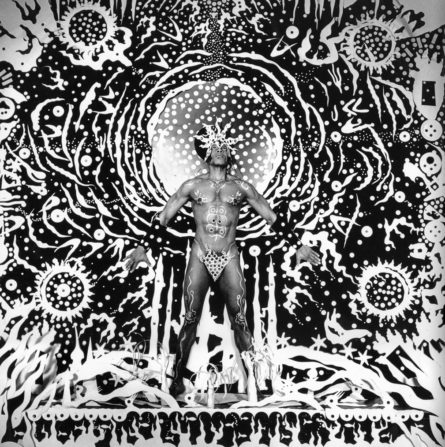
Art has the capacity to balance seemingly incompatible qualities — self-expression and communal tribute, tangible materiality and metaphysical essence, fading ephemerality and boundless eternity. American artist Steven Arnold (1943-1994) embodied these dualities, proving that the dark shadow of death cannot exist without the shining light of life. His enduring legacy is memorialized in an upcoming exhibit at New York’s International Center of Photography and a new documentary Steven Arnold: Heavenly Bodies.
When Arnold died in 1994 amid the AIDS crisis, he left behind a vast body of work. During his life, he fluttered between different modes of art-making — painting, drawing, sculpture, film, photography, fashion, and set design. A pioneer of cultural revolution, Arnold was at the forefront of counter-culture in the ’60s, but meandering through different eras with an indulgent grace, he defied limiting himself to one genre or style. In the ’70s, he was a dashing surrealist; in the ’80s, a mystical revisionist historian. Today, he’s often remembered for his role in launching the gender-bending performance troupe the Cockettes and for studying under Salvador Dalí as his protégé.
Premiering at Outfest at the MOCA Grand in Los Angeles this past July, director Vishnu Dass’s biographical documentary brings together interviews with friends like Simon Doonan, Rumi Missabu, and Holly Woodlawn along with photos and other artworks from the Steven Arnold Archive to illustrate the rich tapestry of the artist’s singular life. Together these elements work to narrate Arnold’s artistic passage from an imaginative student through his experiments with film and psychedelics, and on toward founding a studio in Los Angeles in the ’80s, where he began his distinctive black-and-white tableau vivant photography. …

Monday 12.16.19
PLEASURE PARK – MATT LAMBERT – TOM OF FINLAND FOUNDATION – MEN.COM

Berlin-based filmmaker and photographer Matt Lambert has become known for his art house approach to erotic film. In his fast-paced style, he merges filth, fun, and sexual fantasy with a dynamism rarely seen in the porn production industry.
Pleasure Park is his fifth publishing project, produced as both a film and zine, inspired by the legacy of Tom of Finland. Debuting on Men.com in early 2020, the film is a stylized documentary of a group of adult performers, friends on a hot summer day, shot at the Tom of Finland Foundation, at Tom’s former residence. The cast includes Sean Ford, Joey Mills, Angel Rivera, River Wilson and Tannor Reed, with a live music performance by Taco Guillen of SCUM and several of its East LA Latinx members. The accompanying zine was released in early December 2019, illustration and graphic design crafted by Stefan Fähler, and it is available at the Tom of Finland Store.
Having worked with Christeene and Rick Owens on their infamous music video, Butt Muscle, and the picture book Vitium, a collaboration with his husband Jannis Birsner, Lambert is no stranger to voyeuristic sensibility and sensual oddity. Recounting the experience of making Pleasure Park, he describes, “there’s definitely a big throwback to queercore punk zine culture which we started to play with in Vitium. With Tom’s work being such a conscious and sub-conscious influence on my work, it was so inspiring to create this in the context of the foundation and at the house which holds such a magical and hedonistic spirit.” …

Friday 12.06.19
Pol Anglada
The clever artist explains his drawing process and remembers the passion in teenage daydreams.

Pol Anglada grew up near the Pyrenees Mountains, in the Catalan region of Spain, less than two hours from Barcelona. On his dad’s side, they were electricians; on his mom’s, farmers. His grandma was a talented seamstress who taught him how to sew. In awe, he would watch her work with clientele, friends and neighbors, repairing ripped seams and hemming skirts and pants. As a hobby, his dad and granddad would draw, and sometimes his dad would play a drawing game with him. “My dad might ask me to envision Spider-Man as a princess, or a princess as Spider-Man, or he might tell me to imagine Godzilla and King Kong. He would say, ‘What if they fought: Who would win?’ And once we had finished laughing at the idea, he would say, ‘All right, now draw it.’ ”
When his dad was young, his family traveled across Europe, and he developed a passion for magazines, comic books and graphic novels. Censorship was pervasive in this last phase of Spanish dictatorship; the open display of nudity and sexual content was illegal. But because he was able to travel internationally into his late teen years, Anglada’s dad amassed a broad, immodest collection of printed media, which he later shared with his son.
“A big chunk of my dad’s books were erotic magazines and comics. I became obsessed with them,” Anglada remembers. “They were all intended for straight audiences, but I remember seeing [Bob] Mizer’s Physique Pictorial and trying to spot where you might see a dick or bum.” …

Thursday 12.05.19
Hunter Reynolds / Patina du Prey – From Drag to Dervish – P·P·O·W
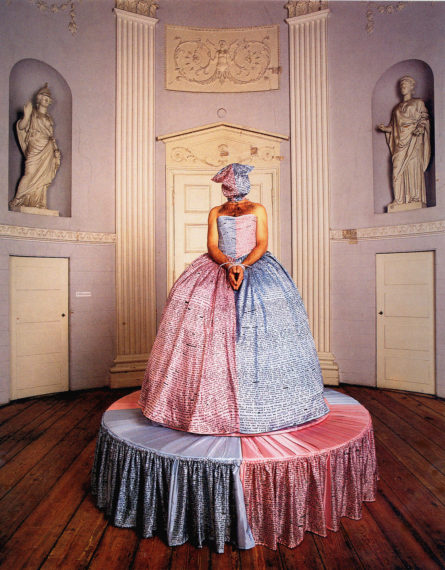
The current show at P·P·O·W gallery in New York boasts a variety of garments, art objects, ephemera, film, and photography — all working together to reconstruct a semblance of Hunter Reynolds’ life as drag performance artist, Patina du Prey. While the artist does not perform in the space, each room in the exhibition represents a different grouping of artifacts, mapping his life and series of performances during the AIDS crisis. As Patina, Reynolds wore makeup and elaborate dresses to elicit a surreal mash-up of gender, a Baroque grandiosity, and a process-driven immediacy. Her existence generated healing, both for the performer and her witnesses. Today, the exhibition allows us to remember a delicate history, which has tossed and turned into the present — of pain and terror, joy and passion, taking what might have become deep repression and exposing it to the light in a howling testimony.
A historical essay by Jane Ursula Harris accompanying the exhibition brilliantly configures Reynolds’ timeline. Life has not been easy for the daring artist, and his childhood was no exception. In a scenario that many queer boys have experienced, he was caught dancing in his sister’s crinoline underskirt as a child. His parents shamed him, and forbid him to wear it again. After coming out at the young age of 14, he was thrown out of his house at 17 for starting a LGB club at his Florida high school, that same year moving to Los Angeles and working nights in a mailroom. Eventually, he got his GED and then an art degree from Otis. …

Wednesday 11.27.19
Duane Michals

Duane Michals doesn’t consider himself a photographer but an expressionist. A great photo, he says, should never show you reality; it should contradict it. It should challenge the way you view the world, bending and upending your assumptions. While Duane is best known for his pioneering narrative sequences — photo series that tell stories like a progression of film stills — his 50-plus-year career spans photojournalism, video art and, of course, portraiture. Duane has shot everyone from René Magritte to Andy Warhol to Meryl Streep. Dreamlike and uncanny, his images tend to offer more questions than answers. And somehow, at 87 years old, he’s still at it.
Born just south of Pittsburgh in 1932, Duane zigzagged from Texas to Colorado to Korea to New York, all before a fateful trip to Russia, where he discovered an instinct for photography. After that, Duane returned to New York and started working in the field professionally, first taking photos for magazines like Esquire and Vogue, then moving to fine-art photography and, with a MoMA show in 1970, landing the first of many prestigious exhibitions.
To hear about it firsthand, I called Duane at his Gramercy Park apartment. He was arch, dryly self-deprecating yet disarmingly insightful. Now in his ninth decade, Duane’s prolific career — which, these days, includes two simultaneous exhibitions at The Morgan Library & Museum and DC Moore Gallery in New York — has maintained its incredible speed. As he said toward the end of our wandering conversation where I laid the compliments on thick, “Yes, yes, hurry up.” …

Tuesday 11.26.19
Peter Berlin: Icon, Artist, Photosexual book signing reception at Bookmarc and after party at Le Chalet at L’Avenue
Wednesday 11.20.19
Peter Berlin
A new book about the seminal photographer.

There is no better moment for Peter Berlin — the artist, model, and filmmaker whose icon status is solidified with a new eponymous book of sexed up self-portraits. Against the sotto voce background of current LGBTQ voices — all trying to convince mainstream America that we’re just like them and worthy of membership in their most conservative institutions (military, marriage, the church) — comes this mostly forgotten statement of gay male libido, a violently subversive gesture. Promiscuity, even public sex, for the sake of sex alone, is currently the “dirty” unmentioned secret of today’s activists who continue their efforts to transform gay liberation into gay assimilation.
The early 1970s, when Berlin (birth name, Armin von Hoyningen-Huene) created many of the photographs featured in Peter Berlin (Damiani, 2019), was a time when exceptions to community trounced the building of community. It was a time when promiscuity was a breathless celebration rather than a threat to the stable dyad, when activists strove to end the draft rather than add their population to it, and when attacks on the concept of gender were self-invented and deliriously unconventional (consider, for example, the gender-bending Cockettes), seldom looking to the medical establishment for support.
I should know because like Berlin, I experienced firsthand the groundbreaking sexual culture of early 1970s San Francisco. During my years there, from 1969 to 1974, unbridled sex was the central focus of my life and that of most of the young queer males I hung out with. I would see Berlin at The Stud on Folsom Street, motionlessly on display against the same pillar almost every evening, his right foot raised and planted on that pillar so that his pelvis jutted forward to present his absolutely unobtainable loins to anyone with the courage to stare. …

Monday 11.18.19
Nash Glynn
She doesn’t think nature was ever natural
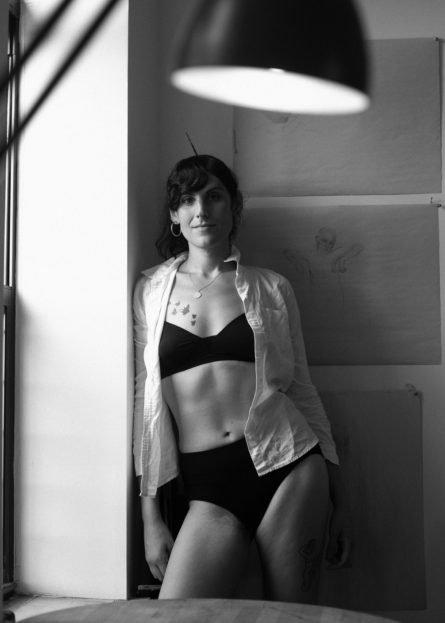
Describing herself as a transdisciplinary artist, Nash Glynn uses photo, video, and painting to address the planet’s future. She explores subjects like fossil fuel extraction and plans to terraform Mars while using traditional figurative painting to increase trans representation and playing with the feminine idea of Mother Earth through personas like Lover Earth.
Glynn grew up in Miami, where rising sea levels made the threats of global warming feel more urgent. As a kid, she learned to paint, working in her father’s set shop, with visual art eventually becoming her ticket out of the city and out of harm’s way. Coming of age as a queer teen, there were the usual fears, violence and bullying, so Glynn commuted two hours to study graphic design instead of attending traditional middle school. She went on to study at Tufts and Columbia, graduating with an MFA in 2017. During grad school, Glynn medically transitioned, no easy feat navigating both at the same time. Today, Brooklyn-based Glynn makes work challenging the gender binary and probing environmental issues, interrogating the idea of nature in both.
Fresh off her recent exhibition at Participant Inc., I met Glynn in late August at her home studio in Greenpoint. While the pressures of validating her identity and processing environmental threats both weigh heavily on her, she’s quick to giggle and incredibly generous. That night she drove me home in a car she bought off Craigslist.
When I returned later in the week for the accompanying photoshoot, Glynn had thrown out her back a day earlier. …


